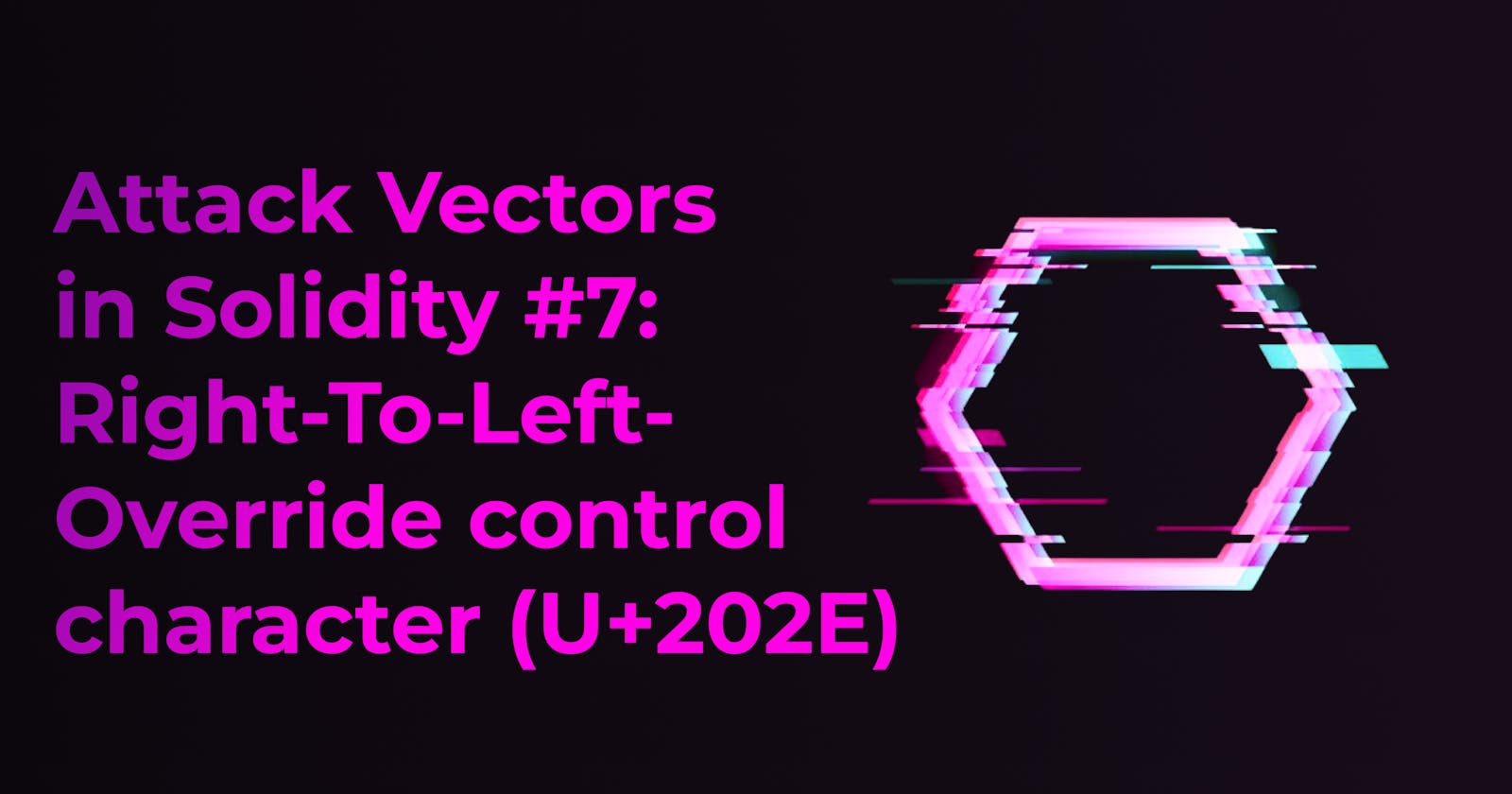Attack Vectors in Solidity #7: Right-To-Left-Override control character (U+202E)
Mitigating the Risk of the Right-To-Left-Override (RLO) Control Character as an Attack Vector
The Right-To-Left-Override (RLO) control character, represented by the Unicode symbol U+202E, is a potential attack vector in the Solidity programming language. This character is used to reverse the direction of text rendering, meaning that characters that would normally be read from left to right will instead be read from right to left. While this may seem like a minor issue, it can have serious consequences if not properly addressed in the Solidity code.
One potential use of the RLO control character as an attack vector is in the manipulation of contract addresses. In Solidity, contract addresses are typically represented as a series of hexadecimal characters. If an attacker were to insert the RLO control character into the middle of a contract address, it could potentially reverse the direction of the address and cause it to be interpreted as a different address. This could potentially lead to the transfer of funds or assets to the wrong address, leading to significant losses for the contract owner. To mitigate this risk, it is important to properly validate contract addresses before they are used in any transactions.
Here is an example of how to validate a contract address using a regex check in Solidity:
function isValidAddress(address _address) public pure returns (bool) {
return bytes(_address).length == 20;
}
Another potential use of the RLO control character as an attack vector is in the manipulation of function names. In Solidity, function names are typically represented as strings of characters. If an attacker were to insert the RLO control character into the middle of a function name, it could potentially reverse the direction of the name and cause it to be interpreted as a different function. This could potentially lead to the execution of unintended functions, leading to potential vulnerabilities in the contract. To mitigate this risk, it is important to properly validate function names before they are called.
Here is an example of how to validate a function name using a regex check in Solidity:
function isValidFunctionName(string _functionName) public pure returns (bool) {
return bytes(_functionName).length <= 24;
}
In conclusion, the RLO control character is a potential attack vector in Solidity that should be carefully considered when developing smart contracts. By properly validating contract addresses and function names, developers can ensure that their contracts are secure against this type of attack.
